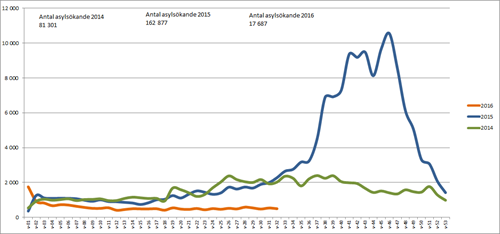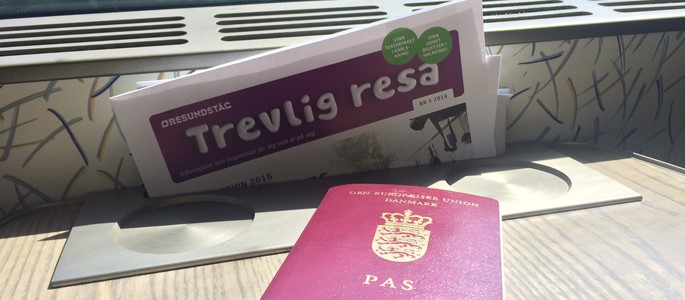ID-control between Denmark and Sweden comes to an end
Trains will once again go directly to Malmö, making it easier to seek asylum in Sweden
After 18 months of ID-control for all passengers at Kastrup station, Sweden now cancels the carrier sanction, so that DSB is no longer obliged to perform the control in Denmark. In return, Sweden will increase the passport control on the Swedish side – on trains as well as for cars passing the border. It is still somewhat unclear what will happen on the ferries.
The Swedish government explains the decision with the number of asylum seekers dropping from 10,000 to 500 a week. But the number may very well rise again now, as it was exactly the ID-control which led to a very sudden decrease. The chart shows influx to Sweden, the blue line for 2015 dropping rapidly in December.

Even though Sweden has actually toughened its legislation for refugees significantly, there has been very little media attention on this, so Sweden is still high on the wishing list. Denmark has always been a transit country to Sweden and Norway, and the new decision will probably make the numbers of asylum seekers rise. Without the control at Kastrup it will again be possible to travel into Sweden and ask for asylum – even if you are stopped by the Swedish police. By the way, the Swedish police states that there is no capacity for an increased passport control.
It is also still possible to apply for asylum when entering Denmark form Germany, for even though the control is still in place here, it is still only a spot check. The EU commission has warned Denmark that the increased spot check can maximum be continued for 6 months and the permission will not be extended again.
The total number of asylum seekers entering Europe was dropping in the last quarter of 2016 to half of the level of 2015. The numbers coming to Germany however are still high, and the waiting times therefore long, so one could imagine a movement towards the north after the ID-control has stopped.
The level of asylum seekers in Denmarak is historically low right now with only 200 arriving during April, and many asylum camps have been closed down.


